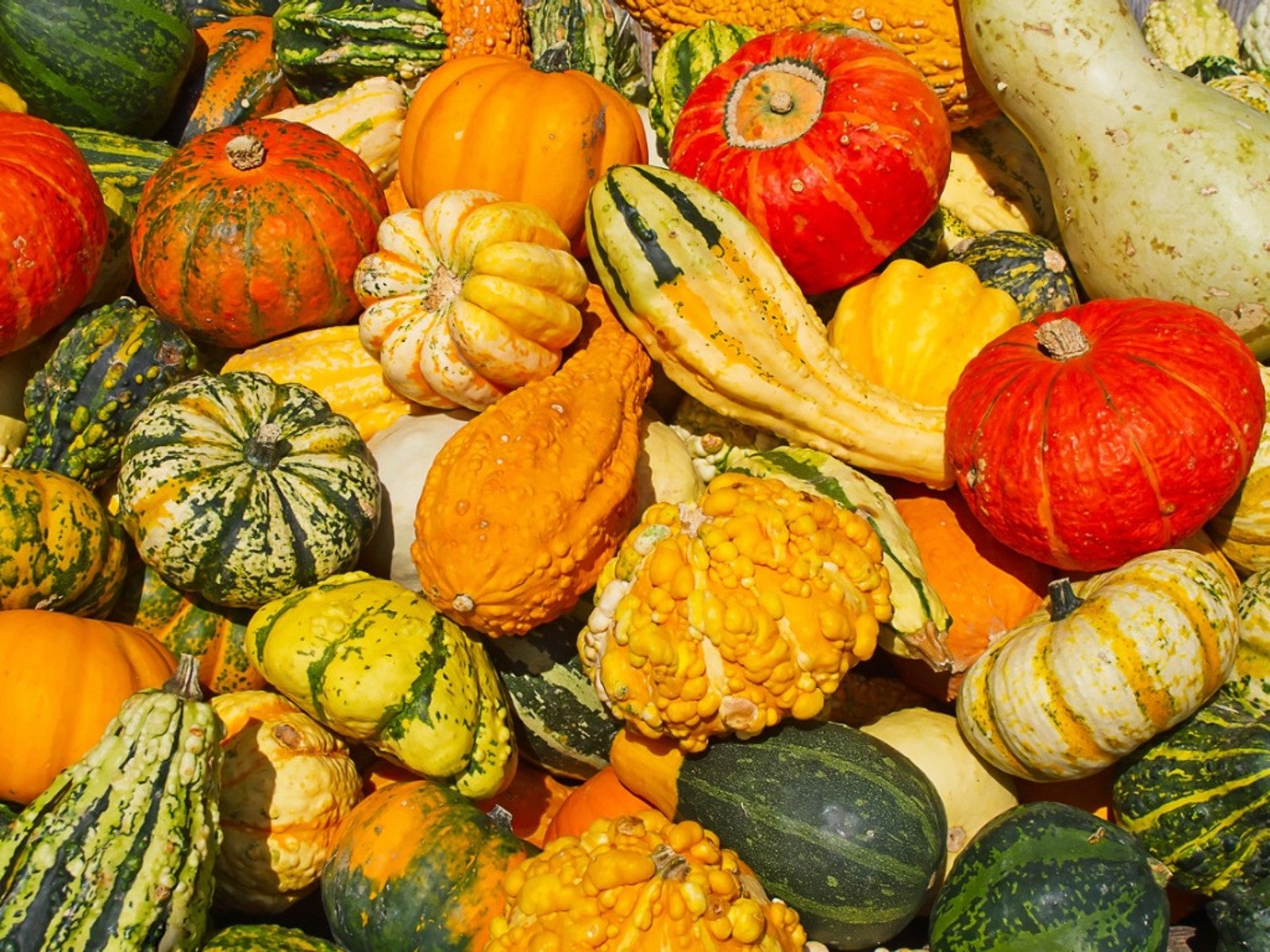5 Ornamental Gourds To Try - Fascinating Gourd Varieties


Did you know ornamental gourds were among the first plants cultivated by early humans? Originally used for crafting bowls, tools and musical instruments, these brightly-colored members of the Cucurbitaceae family were bred for centuries and have become the foundation stock for many of our modern-day gourd varieties.
With shapes ranging from ugly to interesting, gourds are often used in modern times for fall decorating and crafting. Naturally, one of the best ways to acquire unusual kinds of gourd colors and shapes is by cultivating them yourself. If this sounds intriguing, here's our list of the five most fascinating gourds to grow in the home garden.
Five Fascinating Gourds to Grow
- Speckled Swan gourd – A tribute to the the graceful neck of a swan, this easily-recognized variety of bottle gourd (Lagenaria siceraria) has a rounded body with with a slim, curved neck which culminates in an enlarged “head”. Upon reaching maturity in about 125 days, the Speckled Swan gourd will sport an attractive grass green skin highlighted with cream flecking. Often used for crafting, these ornamental gourds have a hard shell which lasts for years when properly preserved.
- Daisy gourd – Developed by Larry Eckler, Daisy is one of many gourd varieties this Michigan plant breeder grows on his 100 acre farm. These small, 2 inch by 3 inch (5 by 8 cm.) gourds mature to various shades of green, orange and yellow. Named for the flower-patterned coloration on the top of the gourd, Daisy gourds make attractive fall decorations. Like other members of the Cucurbita pepo species, Daisy has a soft skin which is similar to that of squash.
- Snake gourd – As the name implies, snake gourds (Trichosanthes cucumerina var. anguina) are quite thin and can reach lengths between 2 and 6 feet (.6-1.8 m.) long. Although many gourds are grown on trellises to promote straightness, this is one of the best gourds to grow on the ground if a curly, snakelike shape is desired. The tendril-edged flowers of this ornamental plant bloom at night and are pollinated by moths.
- Caveman's Club gourd – Looking like something from prehistoric times, Caveman's Club are interesting gourds from the Lagenaria siceraria or bottle gourd species. As a distinctive type of spoon gourd, Caveman's club has a long, slender neck with a ridged, bulbous end. Caveman's Club gourds mature between 10 and 18 inches (25-46 cm.) long. To keep the handle straight, grow this gourd on a trellis.
- Luffa gourd – Perfect for scrubbing dirty dishes or exfoliating dead skin cells, sponge gourds (Luffa spp.) have a fibrous network that remains intact when the gourds are dried. Similar in shape to a cucumber, luffa gourds can reach lengths of 2 feet (.6 m.) or more. These gourd varieties often require a long growing season and can take up to 130 days to reach maturity.
Sign up for the Gardening Know How newsletter today and receive a free copy of our e-book "How to Grow Delicious Tomatoes".

Laura Miller has been gardening all her life. Holding a degree in Biology, Nutrition, and Agriculture, Laura's area of expertise is vegetables, herbs, and all things edible. She lives in Ohio.